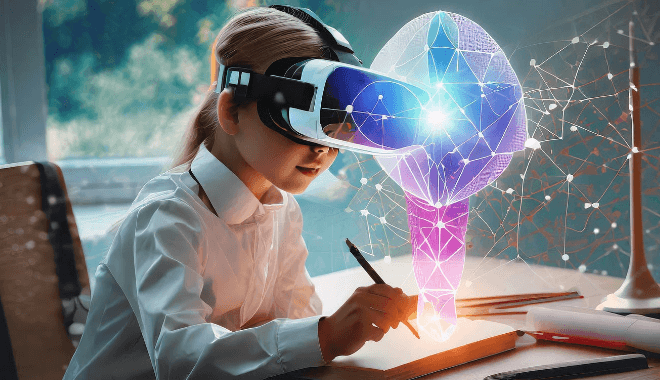How are Virtual and Augmented Reality Technologies Transforming Professional Training and Education?

Introduction
The integration of virtual and augmented reality technologies into professional training and education is not just a passing trend; it represents a major shift in the pedagogical landscape. By immersing learners in a virtual world or augmenting their real-world environment with digital overlays, these technologies offer unparalleled opportunities for learning and development.
Understanding VR and AR
Definition and Key Differences
Virtual reality (VR) transports users to a completely virtual environment, fully detached from the real world. Augmented reality (AR), on the other hand, overlays digital information onto the real world, enhancing one’s perception but not replacing the real environment.
History and Evolution
The origins of VR and AR trace back to the mid-20th century, but significant advancements in the past decade have propelled them into mainstream applications, including education and professional training.
Applications in Education
Current Trends in VR and AR Education
Educational institutions are increasingly adopting VR and AR to provide students with experiences that are either impossible, dangerous, or expensive to replicate in real life.
Case Studies: Successful VR and AR Programs
From virtual labs in universities to AR applications that help in medical and healthcare training, numerous case studies demonstrate the effectiveness of these technologies in enhancing educational outcomes.
Applications in Professional Training
Industries Benefiting from VR and AR
Industries such as manufacturing, healthcare, and aerospace are leveraging VR and AR for training programs, simulating everything from complex surgical procedures to airplane maintenance.
Real-World Examples of VR and AR in Training
Companies like Boeing and Siemens are pioneers, using VR and AR to train technicians and engineers in environments that mimic real-life scenarios without the associated risks.
The Benefits of VR and AR in Learning Environments
Enhanced Engagement and Retention
The immersive nature of VR and AR captivates users, leading to higher engagement levels and better retention of information.
Safe and Controlled Learning Settings
VR and AR provide a safe sandbox for learners to practice skills, perform experiments, and make mistakes without real-world consequences.
Scalability and Customization of Learning Materials
These technologies allow for the rapid scaling and customization of learning modules to fit different needs and learning paces.
The Challenges of Implementing VR and AR
Technological Barriers
Despite their benefits, the widespread adoption of VR and AR is hampered by issues such as the need for high-end hardware and software.
High Costs and Budget Constraints
The initial setup and ongoing development costs associated with VR and AR technologies can be prohibitively expensive for some institutions.
Need for Specialized Content Development
Creating immersive and educational content for VR and AR requires a blend of technical and pedagogical expertise that is currently scarce.
Future Directions in VR and AR Education and Training
Predictions and Upcoming Innovations
The future of VR and AR in education looks promising, with ongoing advancements expected to lower costs and enhance accessibility.
How to Prepare for the Integration of VR and AR
Educational leaders and trainers must consider infrastructure, training for educators, and content development to fully leverage VR and AR technologies.
FAQs
What is the impact of VR and AR on student engagement? VR and AR have been shown to significantly boost student engagement by making learning experiences more interactive and enjoyable.
How do VR and AR help in skill acquisition in professional settings? By simulating real-world tasks, VR and AR allow professionals to gain hands-on experience and practice skills in a risk-free environment.
Can VR and AR replace traditional educational settings? While VR and AR can enhance traditional learning, they are unlikely to completely replace existing educational structures due to their limitations and the need for direct human interaction.
What are the cost implications of adopting VR and AR in institutions? The adoption of VR and AR technologies can be costly, requiring significant investment in hardware, software, and content creation.
How can small institutions implement VR and AR technologies? Small institutions can start small with pilot projects or partnerships with technology providers to spread costs over time.
What are the ethical considerations in using VR and AR for education? Issues such as data privacy, user safety, and equal access must be addressed to ensure ethical use of VR and AR in education.
Conclusion
The transformative potential of VR and AR technologies in professional training and education is immense. As these tools become more refined and accessible, they promise to significantly enhance the efficacy and engagement of learning environments, preparing a new generation for the challenges of the future.






